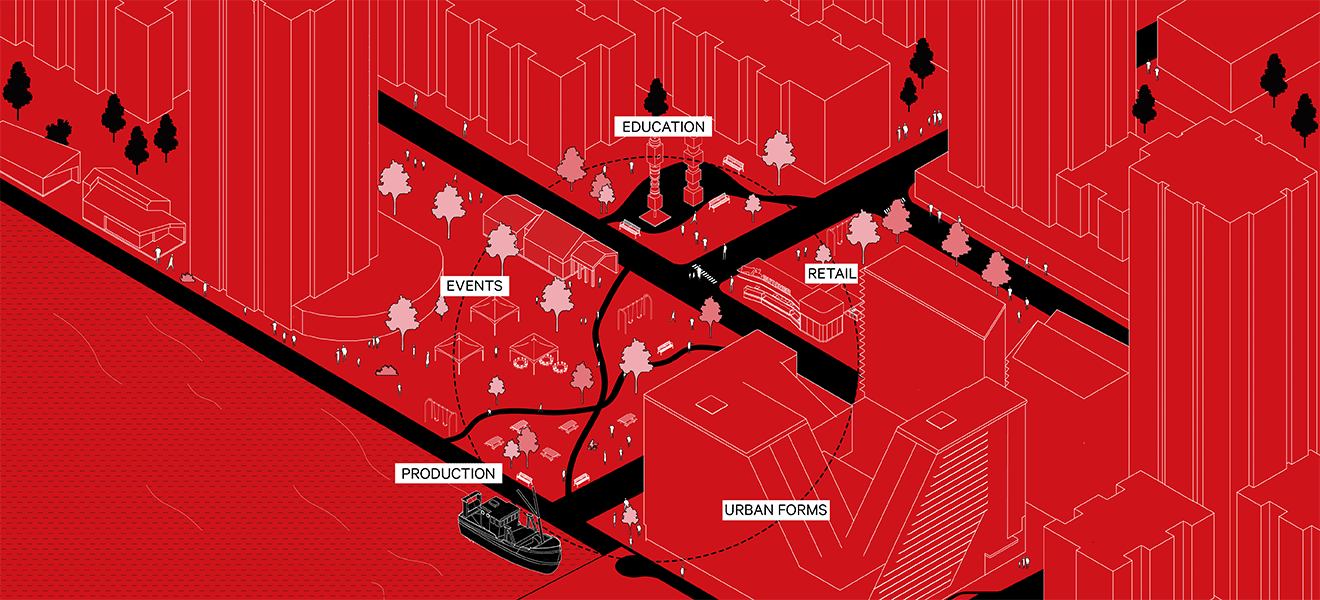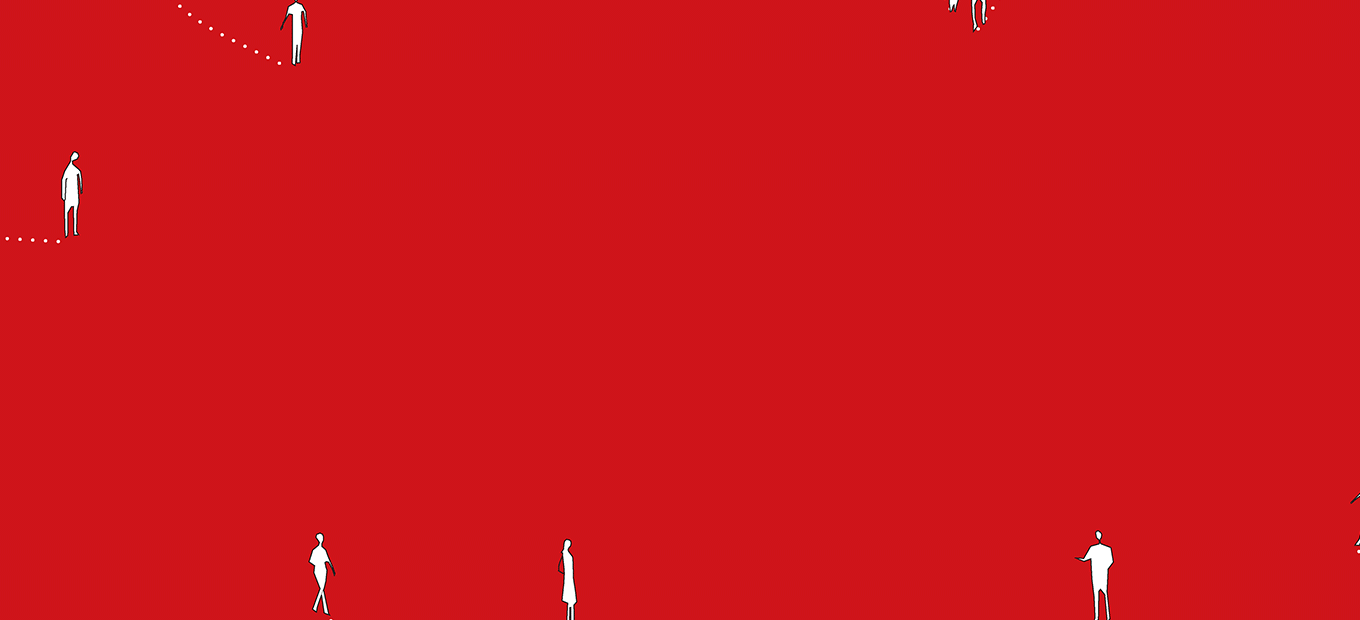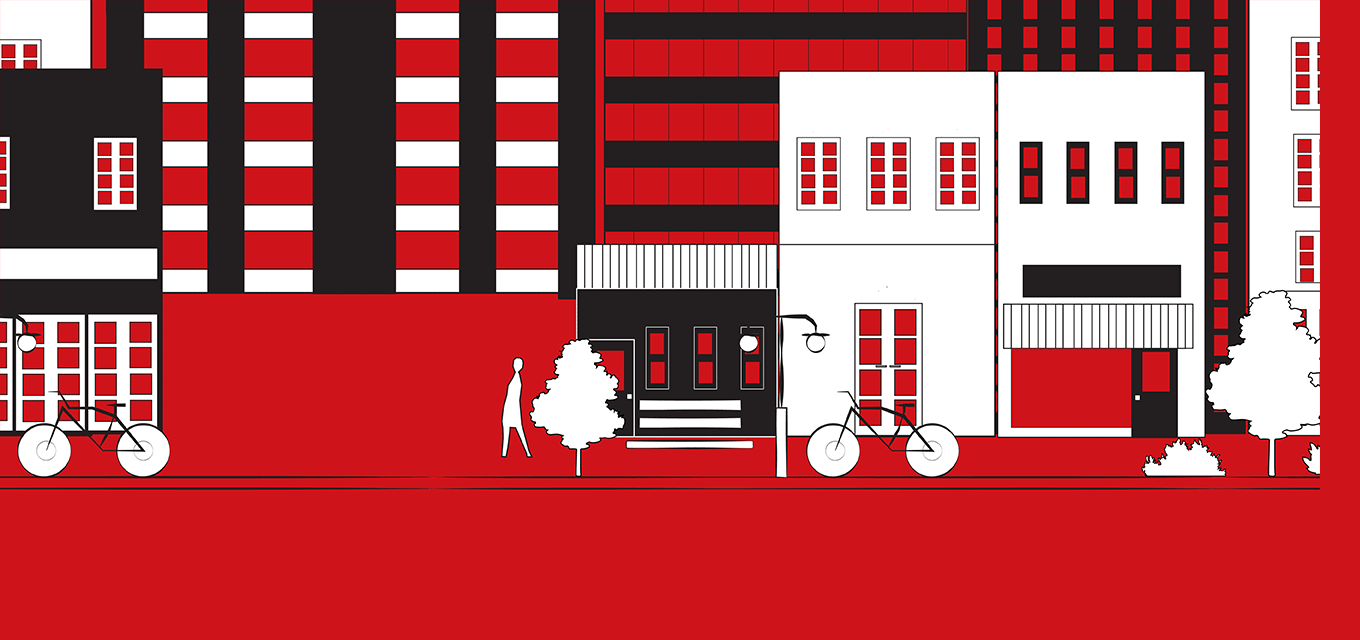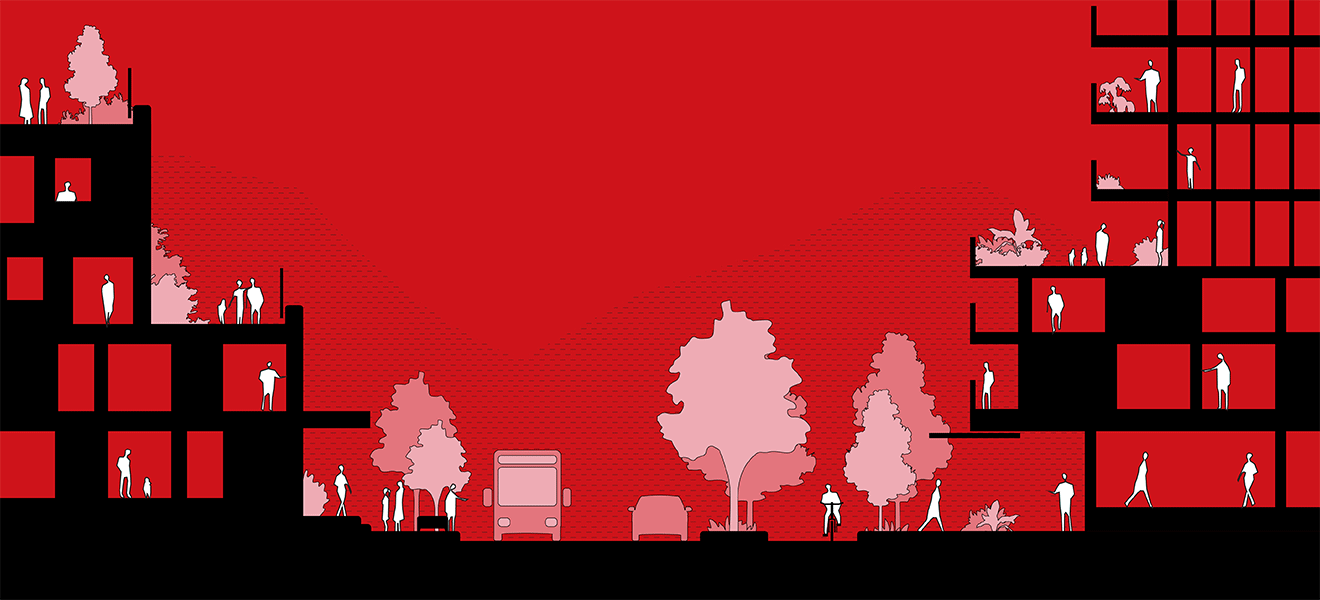Mixing Middle Design Competition Entry (2021)
Project Partner: Elkplan Design (Urban Design & Illustrations)
Our entry for the Urbanarium’s Mixing Middle design competition, entitled ‘Business in My Front Yard’ (BIMFY), proposes a new way think about under-densified single-family neighbourhoods by permitting retail and commercial use in these typically residential-only areas.
Residents can now build ‘tiny towers’ up to five storeys on their property that support additional uses like cafes or bistros, fitness activities, child care, retail, office space, and artist studios. This idea celebrates mixed use as a way to increase vibrancy, social connection, and affordability for all, while maintaining a low barrier to implementation and supporting community-driven initiatives as a way to transform our urban spaces.



